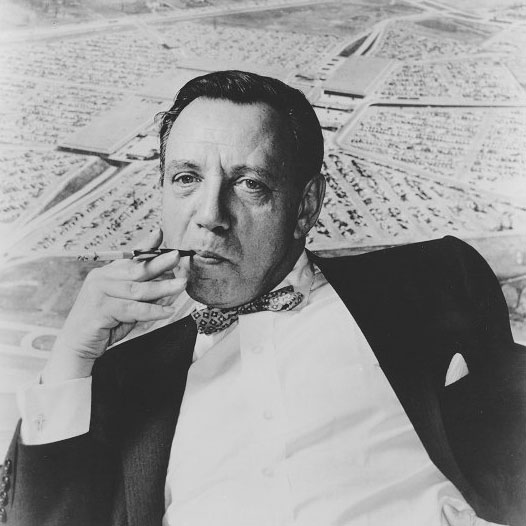From “The Terrazzo Jungle,” Malcolm Gladwell’s great 2004 New Yorker article about the birth of the mall, long before anyone could imagine many of them becoming ghosts or virtual:
“Victor Gruen was short, stout, and unstoppable, with a wild head of hair and eyebrows like unpruned hedgerows. According to a profile in Fortune (and people loved to profile Victor Gruen), he was a ‘torrential talker with eyes as bright as mica and a mind as fast as mercury.’ In the office, he was famous for keeping two or three secretaries working full time, as he moved from one to the next, dictating non-stop in his thick Viennese accent. He grew up in the well-to-do world of prewar Jewish Vienna, studying architecture at the Vienna Academy of Fine Arts—the same school that, a few years previously, had turned down a fledgling artist named Adolf Hitler. At night, he performed satirical cabaret theatre in smoke-filled cafés. He emigrated in 1938, the same week as Freud, when one of his theatre friends dressed up as a Nazi Storm Trooper and drove him and his wife to the airport. They took the first plane they could catch to Zurich, made their way to England, and then boarded the S.S. Statendam for New York, landing, as Gruen later remembered, ‘with an architect’s degree, eight dollars, and no English.’ On the voyage over, he was told by an American to set his sights high—’don’t try to wash dishes or be a waiter, we have millions of them’—but Gruen scarcely needed the advice. He got together with some other German émigrés and formed the Refugee Artists Group. George S. Kaufman’s wife was their biggest fan. Richard Rodgers and Al Jolson gave them money. Irving Berlin helped them with their music. Gruen got on the train to Princeton and came back with a letter of recommendation from Albert Einstein. By the summer of 1939, the group was on Broadway, playing eleven weeks at the Music Box. Then, as M. Jeffrey Hartwick recounts in Mall Maker, his new biography of Gruen, one day he went for a walk in midtown and ran into an old friend from Vienna, Ludwig Lederer, who wanted to open a leather-goods boutique on Fifth Avenue. Victor agreed to design it, and the result was a revolutionary storefront, with a kind of mini-arcade in the entranceway, roughly seventeen by fifteen feet: six exquisite glass cases, spotlights, and faux marble, with green corrugated glass on the ceiling. It was a ‘customer trap.’ This was a brand-new idea in American retail design, particularly on Fifth Avenue, where all the carriage-trade storefronts were flush with the street. The critics raved. Gruen designed Ciro’s on Fifth Avenue, Steckler’s on Broadway, Paris Decorators on the Bronx Concourse, and eleven branches of the California clothing chain Grayson’s. In the early fifties, he designed an outdoor shopping center called Northland outside Detroit for J. L. Hudson’s. It covered a hundred and sixty-three acres and had nearly ten thousand parking spaces. This was little more than a decade and a half since he stepped off the boat, and when Gruen watched the bulldozers break ground he turned to his partner and said, ‘My God but we’ve got a lot of nerve.'” (Thanks TETW.)
••••••••••
Gruen commissioned this 1968 film about the revitalization of Fresno and the building of the Fulton Mall:
Tags: Malcolm Gladwell, Victor Gruen

